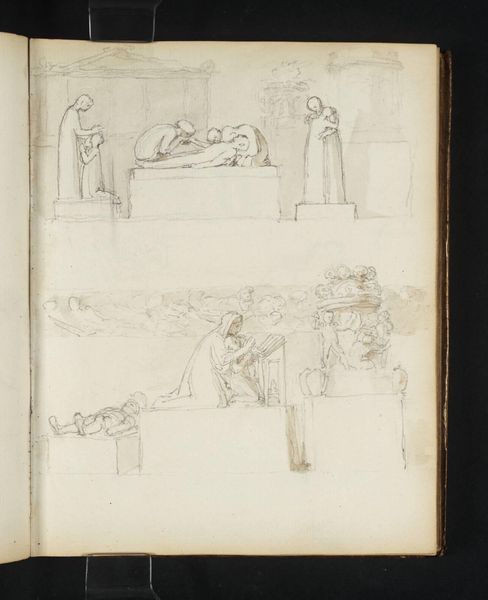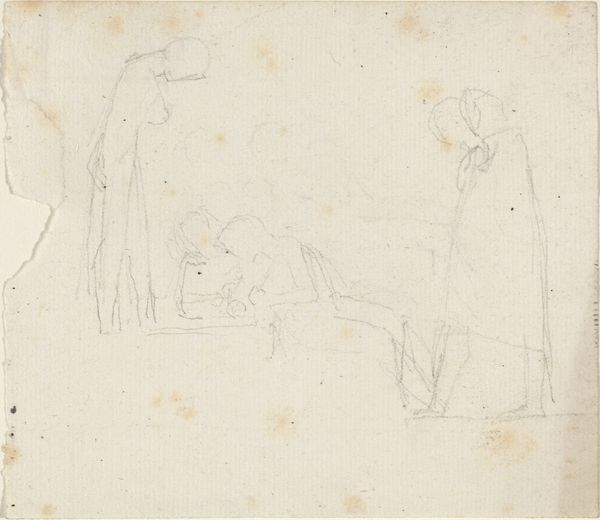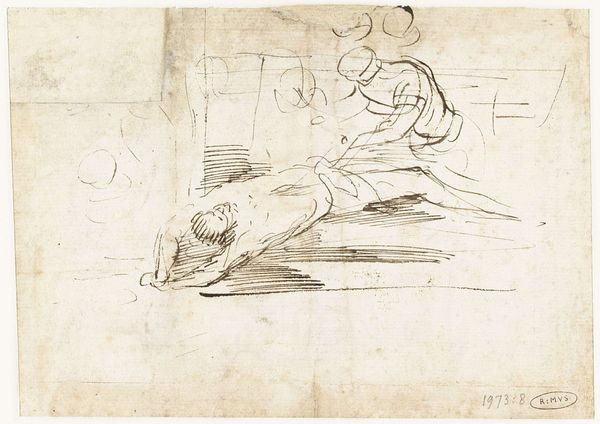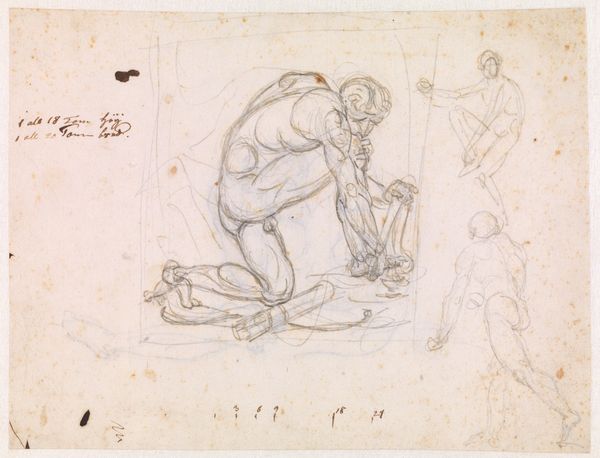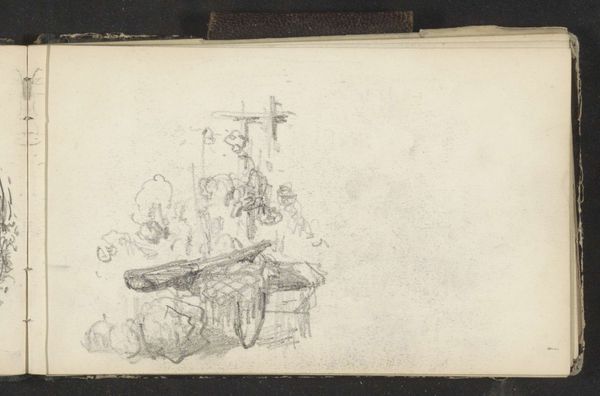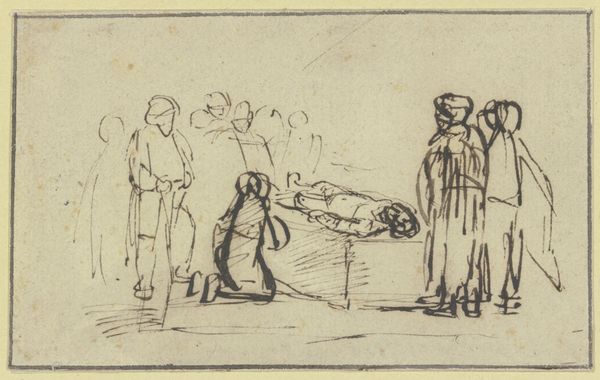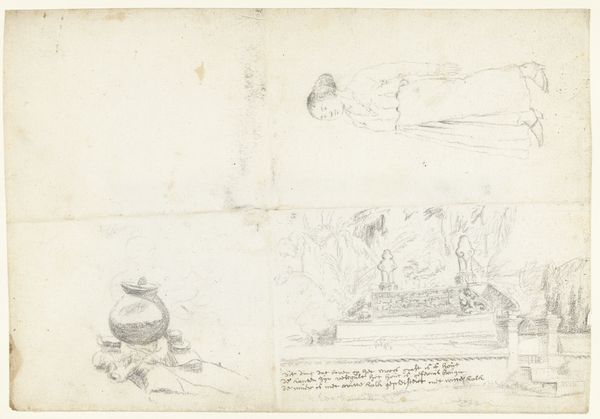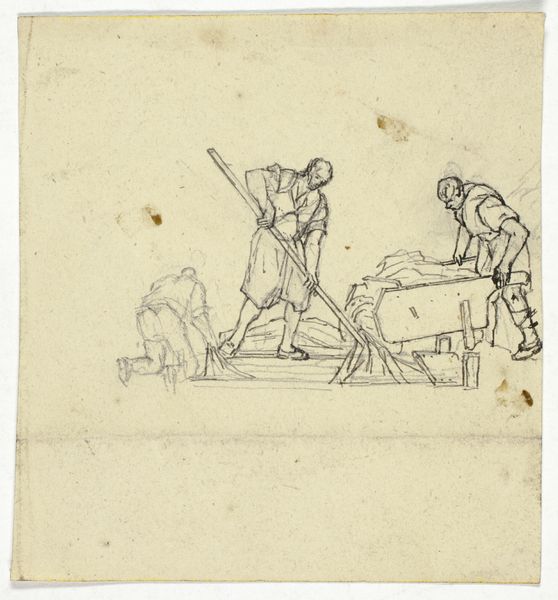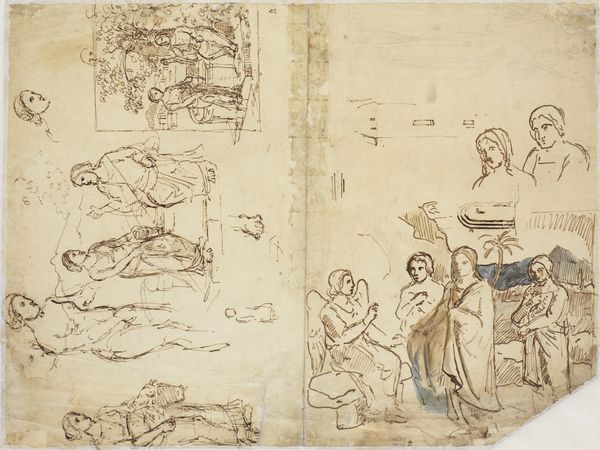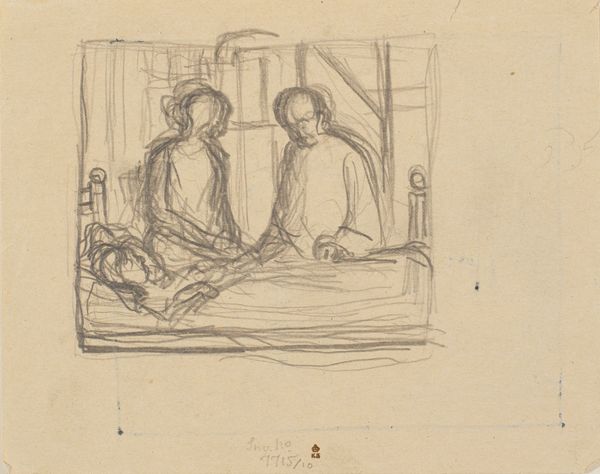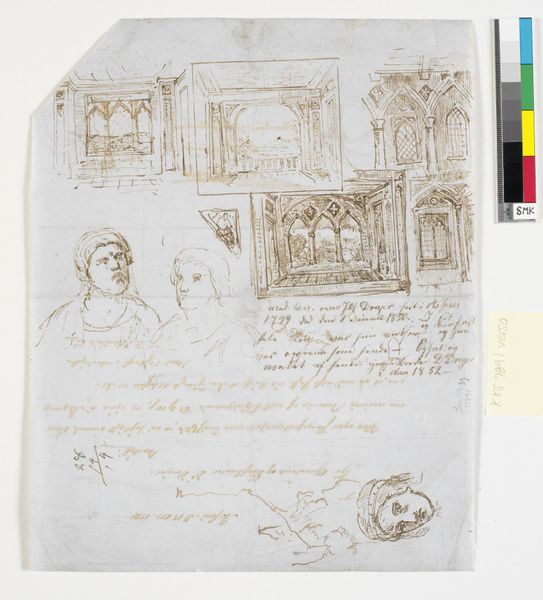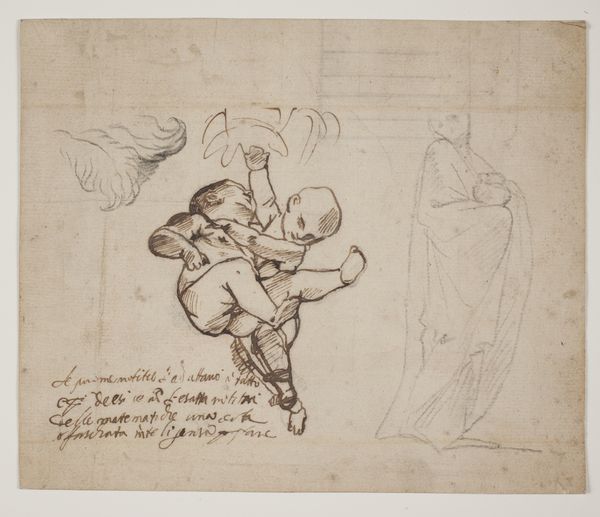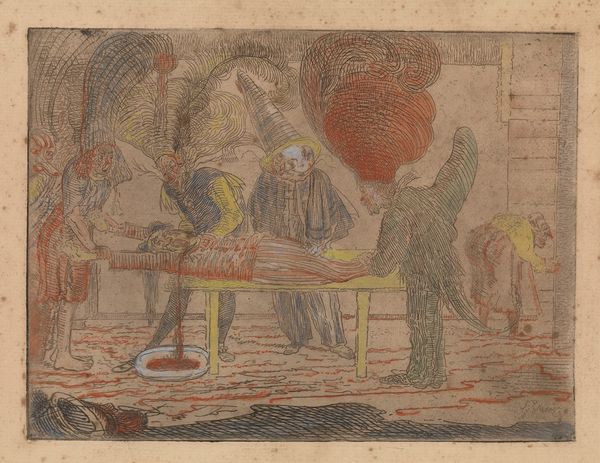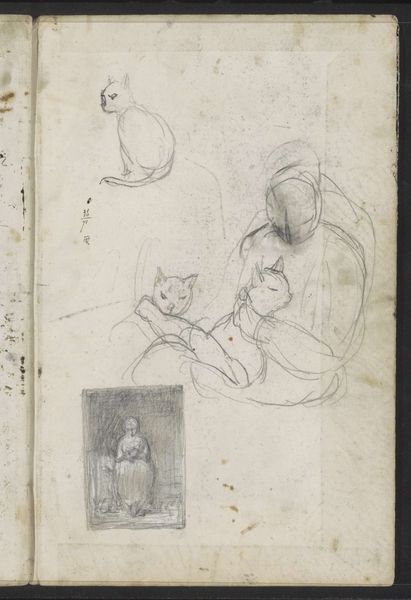
Kejser Claudius' død. Til venstre i billedet betragter Agrippinn giftens virkning 1743 - 1809
0:00
0:00
drawing, paper, ink
#
portrait
#
drawing
#
neoclacissism
#
narrative-art
#
ink painting
#
figuration
#
paper
#
ink
#
history-painting
#
academic-art
Dimensions: 218 mm (height) x 324 mm (width) (bladmaal)
Curator: Let's turn our attention to this ink drawing on paper by Nicolai Abildgaard, dating back to somewhere between 1743 and 1809. It's entitled "Kejser Claudius' død. Til venstre i billedet betragter Agrippinn giftens virkning" or "The Death of Emperor Claudius. Agrippina Watching the Effect of the Poison" in English. Editor: The eye is immediately drawn to the lifeless figure draped across what looks like a dining couch—an impactful diagonal dominating the composition. The starkness of the medium itself really reinforces the coldness of death, don’t you think? Curator: Absolutely. Death looms large here, as does the cunning of Agrippina. In the scene we have Emperor Claudius, presumably after being poisoned by his wife, Agrippina the Younger, so that her son Nero could take the throne. See her standing to the left, calmly observing the scene, along with the others. Editor: What is fascinating here is that Abildgaard relies solely on line. It directs the gaze but also suggests textures. I am wondering how the lines create areas of transparency that heighten the tension and the staging of characters around the figure of dead Claudius, but what about its significance for its time? Curator: Well, the painting is Neoclassical, and depicts historical events, embracing a classical aesthetic, in keeping with the wider trends of the period, an echo of the art and stories from ancient civilizations like Greece and Rome, the style reflecting order and clarity. Notice also, how he uses visual language to explore the psychological states of his subjects – the almost studied dispassion of Agrippina, which makes this such a chillingly effective scene. Power, betrayal, ambition, it is all embedded there, but told through historical reference. Editor: There's something chilling in how Abildgaard captured the event, don’t you agree? That the artist used this medium to evoke the moment. I see this piece now as an invitation to contemplate how a relatively spare medium can portray these powerful moments in history. Curator: Exactly, this work demonstrates Abildgaard's talent in blending classical elements with his unique, evocative style.
Comments
No comments
Be the first to comment and join the conversation on the ultimate creative platform.
